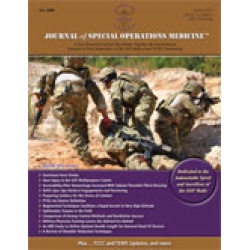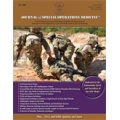A Magnetic Resonance Imaging Study to Define Optimal Needle Length for Humeral Head IO Devices
Rush SC, Bremer J, Foresto C, Rubin AM, Anderson PI 12(2). 77 - 82 (Journal Article)
Introduction: Intraosseous (IO) devices have gained popularity because of TCCC. The ability to gain access to the vascular system when intra venous access is not possible, and techniques such as central lines or cut-downs are beyond the scope of battlefield providers and tactically not feasible, has lead to the increased use of IO access. Since tibias are often not available sites in blast injury patients, the sternum was often used. Recently the humeral head has gained popularity because of ease of access and placement. The optimal needle length has not been defined or studied. Methods and Materials: Fifty consecutive shoulder MRIs among 18-40 year old patients were reviewed. Distances from the skin surface to the cortex from anterior and lateral trajectories were simulated and measured. Two different lateral trajectories were studied described as lateral minimum and lateral maximum trajectories, correlating with seemingly less and greater soft tissue. The cortical thickness was also recorded. Mean values and ranges for the measurements were determined. Results: The anterior trajectory represented the shortest distance. Mean anterior, mean lateral minimum and mean lateral maximum distances were 2.3, 3.0 and 4.7cm with corresponding ranges of 1.1-4.1, 1.6-5.7 and 2.8-7.4cm respectively. The cortical thickness was 4mm in all cases. Conclusions: Although this information was gathered amongst civilians, and many military members may have more soft tissue, these results indicate that needle length generally in the 40-50mm range should be used via the anterior approach. Use of a standard 25mm needle often used in the tibia would be inadequate in over half the cases, and may result in undue tissue compression or distortion.


 English
English 




